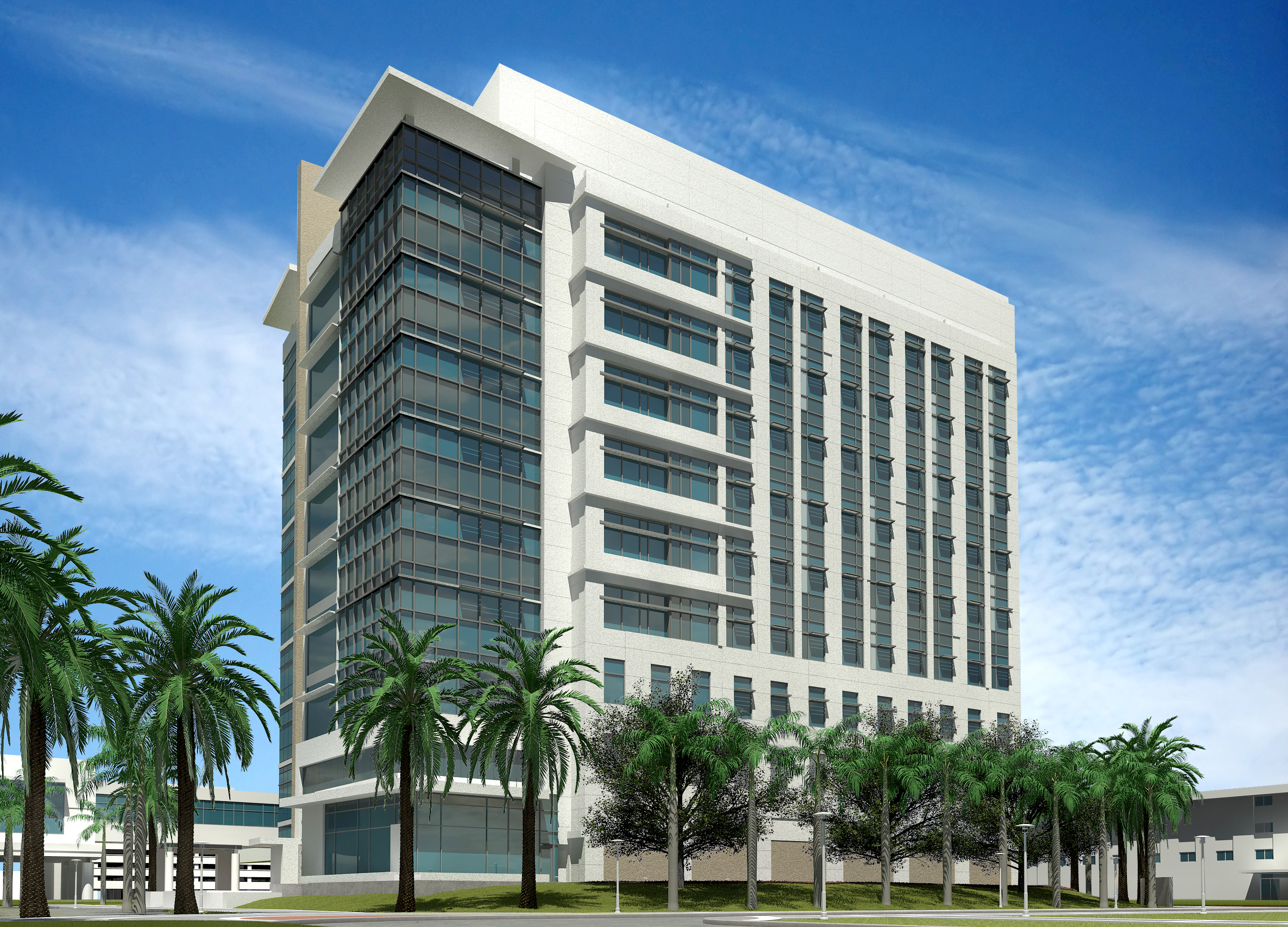Welcome to Ben Burgoyne's AE Senior Thesis e-Portfolio
Building Statistics
General Building Data
Name: |
University of Miami Interdisciplinary Laboratory |
Location: |
N.W. 15th St. & N.W. 9th Ave., Miami, Florida |
Occupant: |
University of Miami |
Type: |
Laboratory |
Size: |
178,000 s.f. |
No. Floors: |
10 |
Owner: |
University of Miami |
General Contractor: |
Moss, http://www.mosscm.com |
Architect: |
Karlsberger Architecture Inc., www.karlsberger.com |
Structure: |
Walter P. Moore, www.walterpmoore.com |
Mechanical: |
Newcomb & Boyd, www.newcomb-boyd.com |
Electrical: |
Newcomb & Boyd, www.newcomb-boyd.com |
Plumbing: |
Newcomb & Boyd, www.newcomb-boyd.com |
Fireproofing: |
Newcomb & Boyd, www.newcomb-boyd.com |
Construction Dates: |
October 2006 - May 2008 |
Cost: |
$57 million |
Delivery: |
Negotiated- Guaranteed Maximum Price |
Architecture
-Steel construction, white concrete and blue-green glass façade, laboratory building, rectangular in shape.
-Located on the University of Miami Campus, the design requires similar elements to the other campus building. These elements include white concrete and blue-green glass façade, as well as palm trees included in the landscaping.
-Design includes 7 floors of research laboratory space, 2 floors of vivarium space, a mechanical penthouse, and 2nd floor land bridge connections to other campus buildings.
-Code: 2001 Florida Building Code used
-Zoning: SD-10-Special Zoning District- Government and Institutional
Building Envelope
-Roofing: hot asphalt built-up roof/Fibertight
-Lightweight/architectural precast concrete exterior wall
-Blue-green glass and aluminum window assemblies, glass Solar Heat Gain Coefficient of 0.35 and U-factor of 0.28 Btu/hr-sf-F.
-Poured concrete foundation and footings with slab on grade first floor.
Structure
The structure is predominantly reinforced normal weight, 3,000-5,000 psi concrete. Each floor is comprised of a 5 inch cast in place slab, supported by 16 inch, one way, precast joists. These run to cast in place girders, and these combinations are supported by cast in place columns, mostly 20x20 and 24x24 in size. The building lateral support is provided by 12” thick cast in place shear walls that run the entire height of the building. These compose the walls for the mechanical, elevator, and stairway shafts. The mechanical penthouse on the tenth floor is a steel structure with mostly W14x22 and W16x21 joists. The first floor is slab on grade, with spread, as well as 22 inch diameter auger cast pile, footings.
Mechanical System
The mechanical system supplies the building in three schemes. The laboratory and vivarium spaces are served by a 100% outdoor air, constant volume mechanical system, with four 50,000 cfm air handling units. Air is exhausted mainly by fume hoods and 4 energy recovery units. The energy recovery units take heat from the air handling units via runaround coils. The office spaces are served by one 23,000 cfm air handling unit, which is variable volume and mixes outdoor air with return air drawn through a plenum on each floor. The mechanical system is served by two 4,000 cfm air handling units. Cooling is supplied by a campus chilled water system, and heating is supplied by two 10,043 MBH boilers.
Electrical/Lighting System
The electrical system is a secondary selective distribution system supplied by 2 feeders consisting of 11 sets of 4- 500 kcmil conductors. The primary building voltage is 480/277 V, which serves the majority of lighting and mechanical loads. 112.5 kVA 480-208Y/120 V stepdown transformers are located on each floor to serve their respective loads. Emergency power is provided via automatic transfer switch by a 1,250 kW diesel generator. The lighting is predominantly fluorescent, the laboratory space lighting including Watt Stopper daylighting sensors.
